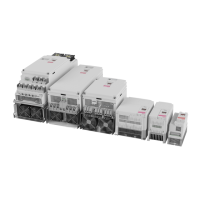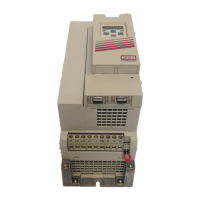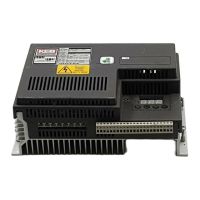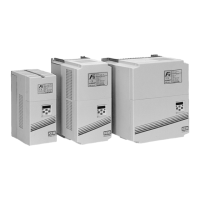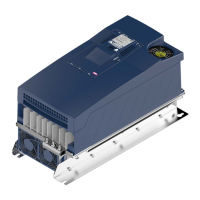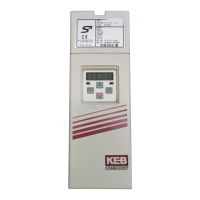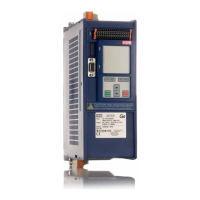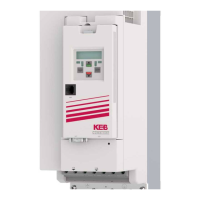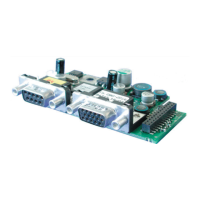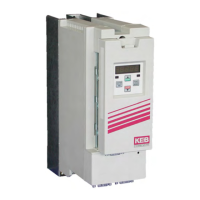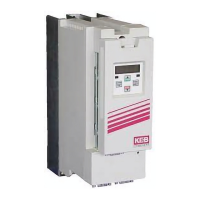23
The parameter determines the time needed to accelerate from 0 Hz to 100 Hz.
The actual acceleration time is proportional to the frequency change.
100 Hz
–––––– x actual acceleration time = CP.12
delta f
Adjustment range: 0.01...300.00 s
Resolution: 0.01 s
Factory setting: 5.00 s
Example: actual acceleration time = 5s; the drive should accelerate from
10 Hz to 60 Hz, delta f = 60 Hz - 10 Hz = 50 Hz
CP.12 = (100 Hz / 50 Hz) x 5 s = 10 s
The parameter determines the time needed to decelerate from 100 Hz to 0 Hz.
The actual deceleration time is proportional to the frequency change.
100 Hz
–––––– x actual deceleration time = CP.13
delta f
Adjustment range: -1; 0.01...300.00 s
Resolution: 0.01 s
Factory setting: 5.00 s
By depressing DOWN arrow key, one increment passed the 0.0, the display
will show "=Acc". This means the same value stored in CP.12 (Decel=Accel
time)!
Example: actual deceleration time = 5s; the drive should decelerate from
60 Hz to 10 Hz. delta f = 60 Hz - 10 Hz = 50 Hz
CP.13 = (100 Hz / 50 Hz) x 5 s = 10 s
For some applications it is advantageous when the drive starts and stops
jerk-free. This is achieved by modifying the acceleration and deceleration
ramps. This modification time; also called S-curve time, can be adjusted
with CP.14.
Adjustment range: 0.00 (off)...5.00 s
Resolution: 0.01 s
Factory setting: 0.00 s (off)
Basic Adjustment of the Drive
Acceleration time
Deceleration time
S-curve time
In order to define the ramps with the activated S-curve time,
the acceleration and deceleration times (CP.12 and CP.13)
must be adjusted higher than the S-curve time (CP.14).
100 Hz
CP. 12
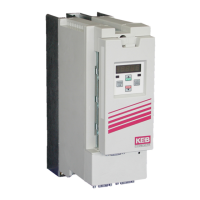
